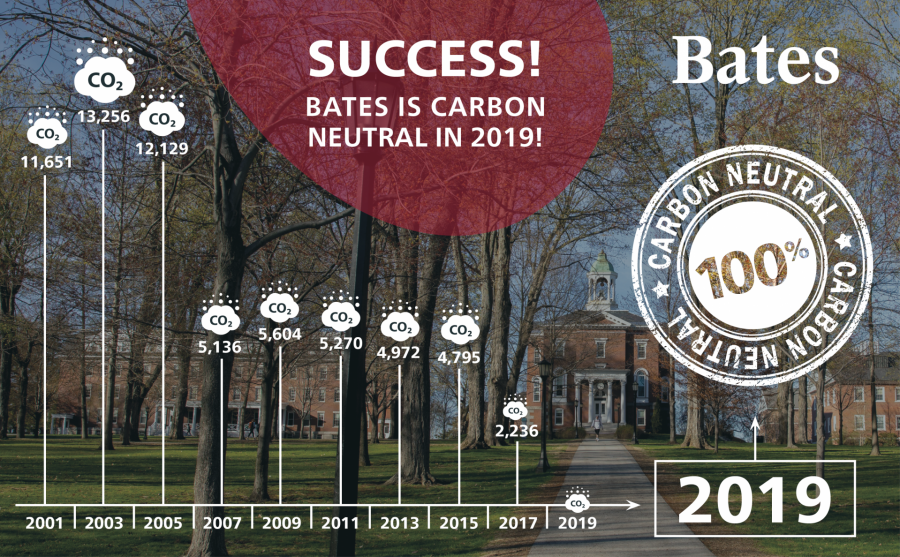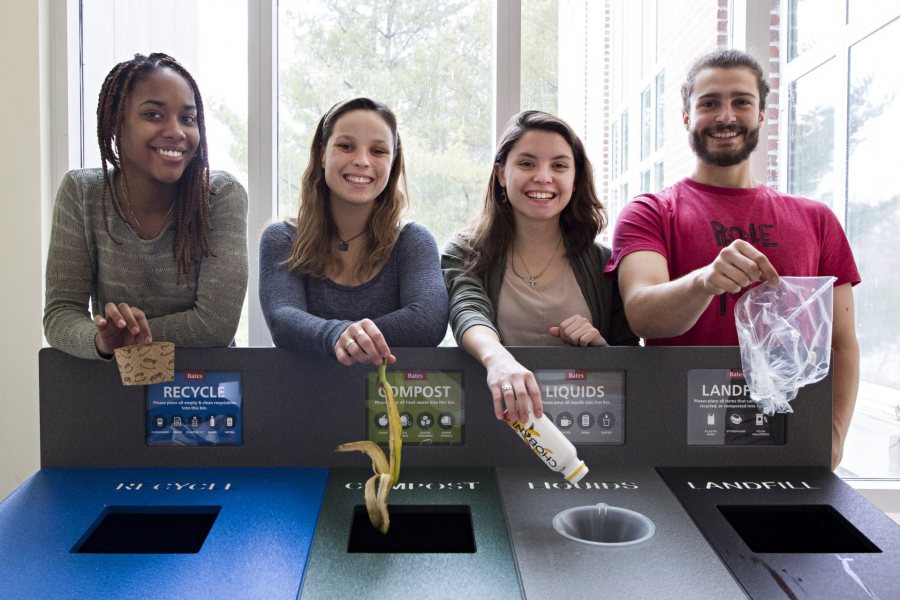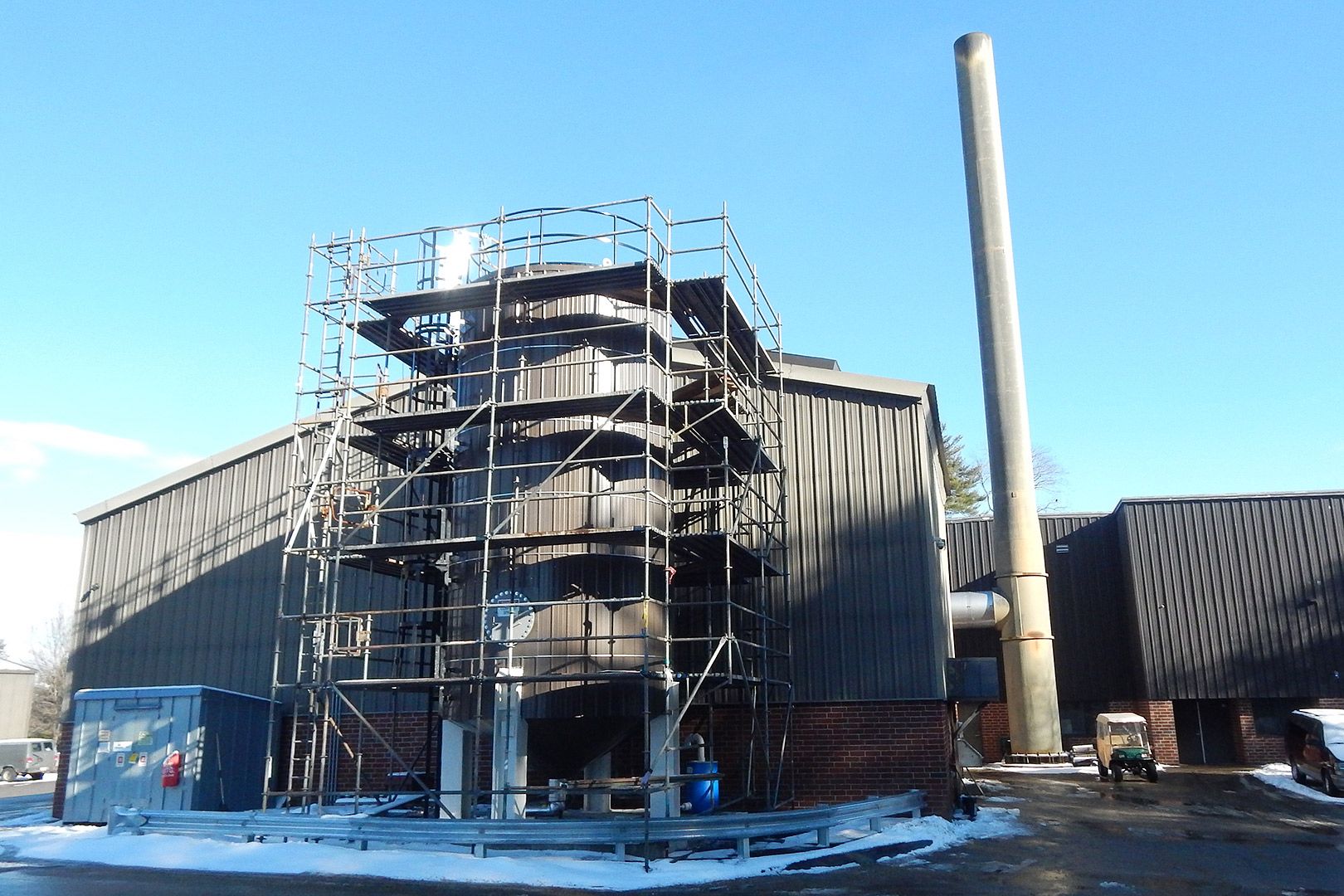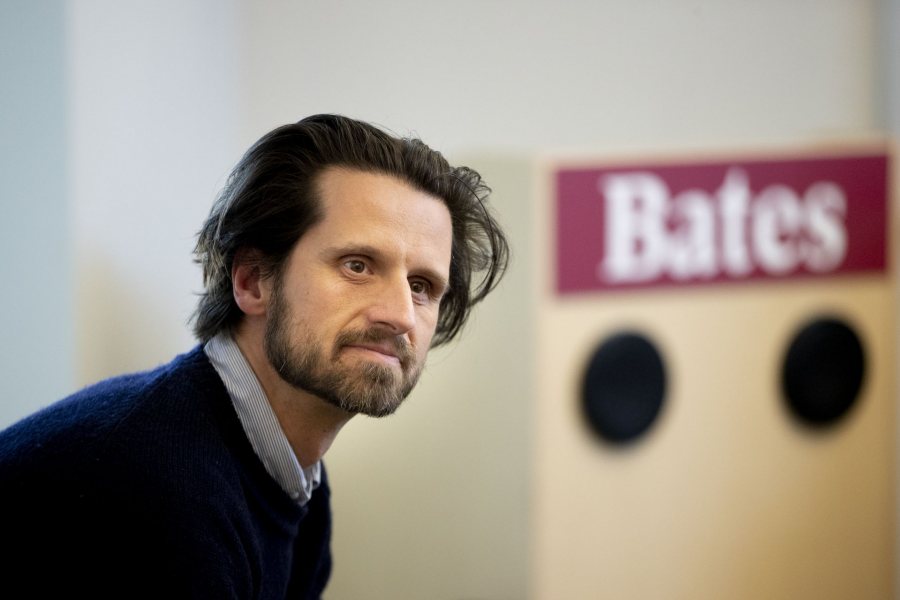
A year ahead of its announced commitment, Bates College has become carbon neutral.
Measured against a 2001 baseline, Bates has eliminated 95 percent of its campus greenhouse gas emissions, and will purchase carbon offsets for the remainder. In its Climate Action Plan, announced nine years ago, Bates committed to hitting this important milestone by 2020.
Reaching the goal early is a measure of the college’s determination and leadership in combating climate change, and in sustainability overall. Out of some 700 U.S. colleges and universities to sign a carbon-neutrality pledge in 2007, Bates is one of only seven to date that have reached that goal.
“This achievement shows Bates at its best,” says Bates President Clayton Spencer. “Our mission statement calls for responsible stewardship of the wider world, and at this point in our history on this planet, there is no higher need than addressing climate change.
“More important, we have met this goal through shared effort, commitment, and creativity by the entire college community with students leading the way.”
Broadly speaking, Bates worked on three fronts to shrink its carbon footprint: reducing energy consumption through efficiency measures; strengthening the culture of sustainability on campus; and switching to renewable energy sources — most important, Renewable Fuel Oil (RFO), a wood-derived liquid that’s now the primary fuel for the college’s central heating plant.
“These efforts are a win-win for Bates: The college has reduced waste and achieved carbon neutrality in a manner that makes sound financial sense.”
Largely because of the impact of RFO, the Association for the Advancement of Sustainability in Higher Education ranked Bates fourth in the world for its clean energy program in 2017.
“Bates has successfully integrated behavioral change into the everyday patterns of the college and adapted innovative energy solutions into the very core of campus operations,” says Geoff Swift, vice president for finance and administration and treasurer.
“Together, these efforts are a win-win for Bates: The college has reduced waste and achieved carbon neutrality in a manner that makes sound financial sense.”
From its baseline in 2001, Bates chipped away at its carbon emissions, gaining major strides after 2005 by purchasing green electricity and, starting in 2017, by using Renewable Fuel Oil in its campus boilers.

“I chose Bates because of its sustainability programs,” says Tamsin Stringer ’22 of Bloomington, Ind. Stringer is a member of both the college’s EcoReps, a student task force for green initiatives on campus, and its Committee on Environmental Responsibility, a faculty, staff, and student group that charted Bates’ course toward carbon neutrality.
Stringer attended the CER meeting earlier this month where senior staff revealed that Bates would achieve neutrality ahead of schedule. “I felt proud to be going to Bates,” she says. “The fact that a school can take an initiative like that and uphold its commitment is just really inspiring to me.”
Tom Twist, Bates’ sustainability manager, estimates that nearly two-thirds of the emissions reduction is attributable to, first, Bates’ switch to renewable sources of electricity, in 2005; and second, to efficiency and conservation measures overseen by college energy manager John Rasmussen.

EcoReps, a student task force for green initiatives on campus, have been integral to the college’s march toward carbon neutrality. In 2017, these EcoReps, Isa Moise ’19, Beanie O’Shea ’18, Hannah Slattery ’18, and George Fiske ’19, posed for a portrait to demonstrate the proper use of new waste systems on campus. (Josh Kuckens/Bates College)
All told, these efficiency measures have reduced the college’s utility bills by more than $1 million annually. These include the replacement of virtually all campus lighting with LED lamps; enhancing building insulation and replacing windows across campus with better-sealed units; and acquiring technology that enables much more precise, and therefore energy-saving, monitoring and control for HVAC and other electrical draws.
The remaining emissions were eliminated mostly by converting to fossil-free fuels, notably the adoption of the new fuel oil for the steam plant that heats most of the campus — more than a million square feet of interior space. RFO, produced by the Canadian firm Ensyn, is created from forest industry byproducts in a chemical reaction that, once started, is largely fueled by its own byproducts.
In 2017, the college started burning RFO in one of the steam plant’s three boilers. This year, Bates converted a second boiler, ensuring that RFO is virtually the only heat source for buildings served by the central plant.
Bates is the only U.S. educational institution using RFO for heat, and one of only three U.S. institutions of any kind that heat with it.

Key to the college becoming carbon neutral is using Renewable Fuel Oil for heat, and Bates is the only U.S. educational institution doing so. Here, scaffolding surrounds the new RFO tank in January 2017. (Doug Hubley/Bates College)
Harder to quantify but essential to Bates’ achievement is a campus culture dedicated to sustainability, as well as social justice, which for many at Bates go hand in hand.
The academic curriculum includes an interdisciplinary environmental studies program that integrates the natural sciences and humanities, and immerses students in community-engaged research and action.
Students drive a number of environmental organizations on campus — notably the EcoReps, overseen by sustainability manager Twist, a program that gives its members both the practical and interpersonal skills to make things happen on campus and in life after Bates.
The greenhouse gas emissions chart that the college has used to track progress toward neutrality, for example, was created by EcoReps, Twist points out.
Previously, aside from a professional assessment performed in 2009, “it was just a blank map. We had no idea where we were. So we had students work on it for two years, and they filled it in,” Twist explains. “And they actually did a better job than the paid consultants.”

Students are “basically embedded in every single sustainability project that we’re doing, and they’re doing real work,” says Tom Twist, the college’s sustainability manager, seen during a recent meeting of the Committee on Environmental Responsibility. (Phyllis Graber Jensen/Bates College)
As far back as 2014, if not longer, Bates faculty have invited students to play a role in the carbon-neutrality effort through their work in class.
For instance, for their capstone project in environmental studies, two 2018 graduates conducted research into carbon offsets — verified programs that ameliorate atmospheric carbon through various means — that informed Bates’ current neutrality plan. (Bates is purchasing offsets that support the capture of methane, a potent greenhouse gas, as it escapes from landfills, diverting it for energy production.)
“I haven’t seen any other school trust its students as much as we do with sustainability work.”
“I was very excited about this wealth of information that we had at our fingertips and about our realization that we had many affordable options to reach carbon neutrality,” says one of those alumnae, Caitlin Keady of Kamloops, British Columbia.
“I felt empowered by this work and by the knowledge that with a bit of research and a few late nights I could help change the way Bates prioritizes sustainability,” says Keady, who will start working toward a master’s in environmental engineering this fall. “I acquired a vast range of skills as an EcoRep, from leadership and presentation techniques to data analysis and report writing. I grew a tremendous amount as an aspiring professional in this field.”

EcoReps George Fiske ’19, Brent Feldman ’17, and Katharine Gaillard ’19 install solar panels at the college’s Coastal Center at Shortridge in October 2016. The center is now 100 percent solar. (Tom Twist/Bates College)
“I haven’t seen any other school trust its students as much as we do with sustainability work,” says Twist. “They’re basically embedded in every single sustainability project that we’re doing, and they’re doing real work.”
He adds, “You hear tons of bad news about climate change every day, but you don’t hear a lot of coverage on what to do about it, and that makes people very depressed and hopeless. We’re showing students a viable pathway for how to do this.”
In fact, the entire campus community benefits from Bates’ inclusive approach to green action. “In terms of sustainability,” he says, “Bates has a really deep bench.”
“Bates has stepped up, taken responsibility for its carbon footprint, and done so in a way that should be a model for other institutions.”
Initiatives like the Green Innovation Grants program keep the interest high among staff, faculty, and students alike. And the CER, legislated into existence in 2007 and currently chaired by physics professor Travis Gould, “is in a unique position to address higher-level sustainability policy,” says Twist.
“That was the group that leveraged what we knew about carbon neutrality and suggested that we advise senior staff that we were within striking distance of neutrality.”
“Bates has stepped up, taken responsibility for its carbon footprint, and done so in a way that should be a model for other institutions,” says Gould. “It’s been a process of years, and I want to recognize the contributions of faculty — in teaching, research, and leadership — that helped get us to this point. This really has been a collective effort.”
A recent poll of the Bates campus community showed that virtually the entire student body, and 96 percent of staff and faculty, supported the college’s attainment of carbon neutrality by 2020.
Slightly more than half of first-year students polled by the college Admission office said that they — like Tamsin Stringer — were attracted to Bates by its commitment to environmental sustainability.

Like Tamsin Stringer ’22, an EcoRep from Bloomington, Ind., seen attending a meeting of the college’s Committee on Environmental Responsibility, many current students choose to attend Bates for its sustainability programs. (Phyllis Graber Jensen/Bates College)
After peaking in 2003, Bates’ greenhouse gas emissions dropped dramatically in 2005, the year the college began sourcing all of its electricity from wind power. In 2007, the year Bates joined the American College & University Presidents’ Climate Commitment, emissions were less than half of the 2003 high-water mark.
Between campus-wide efficiency measures and the sharp reduction made possible by the switch to RFO, emissions plummeted again starting in 2015 — all this despite the addition of some 200,000 square feet of building space to the campus since 2001.
Bates is relying only minimally on the purchase of carbon offsets to attain carbon neutrality. The college will spend about $7,000 annually to offset fossil-fueled heat in certain buildings and travel to and from campus, including air travel for student study abroad and faculty research trips.




